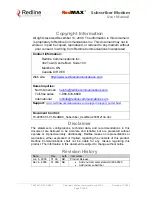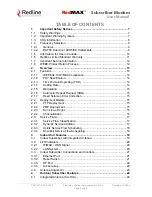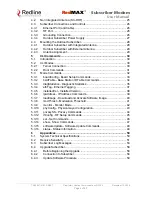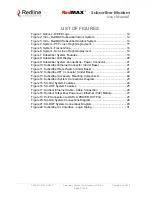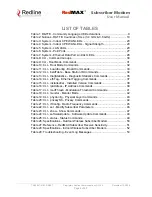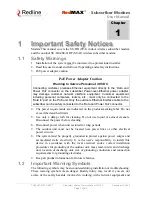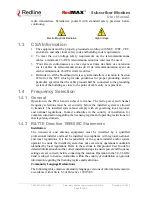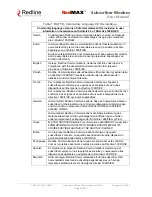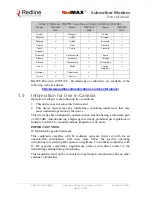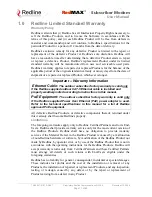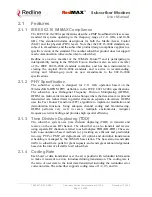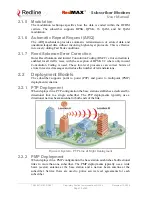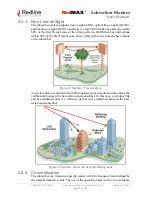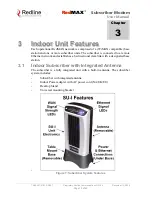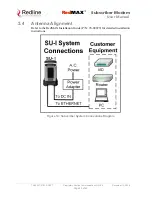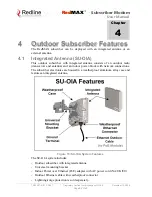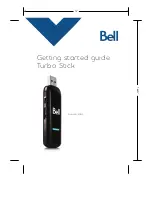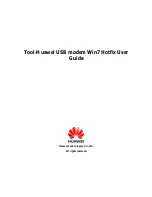
Red
MAX
™
Subscriber Modem
User Manual
70-00057-01-01-DRAFT
Proprietary Redline Communications © 2006
December
13,
2006
Page 14 of 60
2.1 Features
2.1.1 IEEE 802.16 WiMAX Compliance
The IEEE 802.16-2004 specifications describe a PMP broadband wireless access
standard for systems operating in the frequency range of 2-11 GHz, and 10-66
GHz. This standard includes descriptions for both the Media Access Control
(MAC) and the physical (PHY) layers. Note that the 802.16-2004 standards are
subject to amendment, and the subscriber product design compliance applies to a
specific revision of the standard. The outdoor subscriber product does not support
mesh communication (direct subscriber-to-subscriber).
Redline is an active member of the WiMAX Forum™ and is participating in
interoperability testing in the WiMAX Forum. Redline is also an active member
of the IEEE 802.16-2004 standards committee and has been instrumental in
creating the original 802.16-2004 standards, and is active in recommending,
writing and following-up work on new amendments to the 802.16-2004
specifications.
2.1.2 PHY
Specification
The subscriber system is designed for 2-11 GHz operation based on the
WirelessMAN-OFDM PHY definition in the IEEE 802.16-2004 specifications.
The subscriber uses Orthogonal Frequency Division Multiplexing (OFDM).
OFDM is a multi-carrier transmission technique where the data stream is split and
transmitted (at a reduced rate) in parallel streams on separate sub-carriers. OFDM
uses the Fast Fourier Transform (FFT) algorithm to implement modulation and
demodulation functions. Using adequate channel coding and bit-interleaving,
OFDM performs very well in severe multipath environments, mitigates
frequency-selective fading, and provides high spectral efficiency.
2.1.3 Time Division Duplexing (TDD)
The subscriber system uses time division duplexing (TDD) to transmit and
receive on the same RF channel. The subscriber can also transmit and receive
using separate RF channels, referred to as half-duplex FDD (HD-FDD). These are
both non-contention based methods for providing an efficient and predictable
two-way PTP or PMP cell deployment. All uplink and downlink transmission
scheduling is managed by the WiMAX base station. The base station sends data
traffic to subscribers, polls for grant requests, and sends grant acknowledgements
based on the total of all traffic to all subscribers.
2.1.4 Coding
Rate
Each burst of data transmitted over the air is padded with redundant information
to make it resistant to errors introduced during transmission. The coding rate is
the ratio of user data to the total data transmitted including the redundant error
correction data. The subscriber supports coding rates of 1/2, 2/3, and 3/4.


